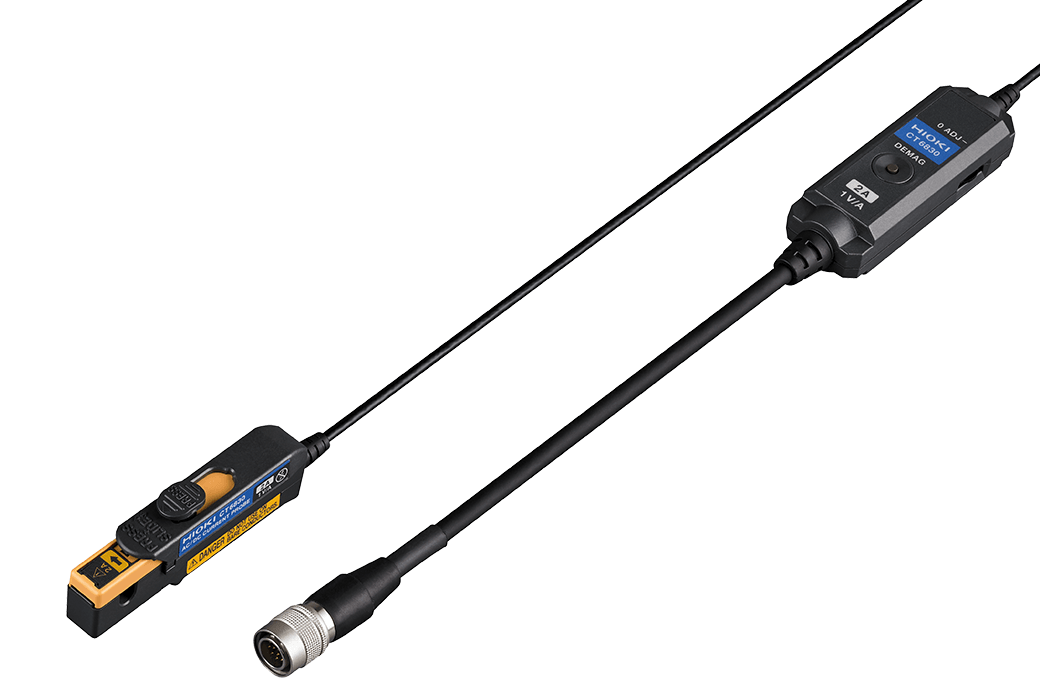Revolutionizing EV Power Testing: A Japanese Automaker's Success with Hioki's CT6833 and CT6834 Current Sensors
How new current sensors transformed vehicle testing
Featured customer
A major Japanese automobile manufacturer has been using Hioki's high-precision current sensors for many years. However, clamping large current sensors in the narrow spaces inside vehicles posed a challenge. In response to their feedback, Hioki's engineers developed a series of new clamp sensors that overcame the previously impossible task of reducing the size of the jaws while improving performance.
One of the engineers involved in the testing shared:
“The compact size eliminated the need for cable modification work, cutting setup time by 30%.”
Background
In mass production testing of vehicles, automakers use chassis dynamometers to simulate regulated driving cycles. During these tests, the amount of power consumed by the battery and the amount regenerated through braking are measured to assess their impact on fuel efficiency and driving range.
Therefore, the cumulative power consumption values had to be reflected as correction factors for fuel efficiency and driving range, requiring high-precision measurement of the current detection for each battery.
To install the previous current sensor models, engineers had to disconnect cables from the battery terminals and attach extension cables—introducing a series of issues:
- Risk of damaging vehicle wiring or plastic battery components, potentially affecting vehicle quality.
- Risk of short circuits or electric shock during extension cable handling, raising safety concerns.
- Expense in time to install and remove current sensors for each test, adding more than 20 minutes of manual work per vehicle.

Key considerations that led the customer to choose Hioki
To ensure safety for operators, minimize labor time, and avoid the risk of damaging components, the automotive R&D team sought a current sensor that could be clamped directly onto the conductor without requiring an extension cable. The sensor needed to maintain the same level of accuracy as conventional sensors, even with a new compact form.
They selected the CT6833 and CT6834 as the solution. The key deciding factors were their 50% smaller size compared to previous models and outstanding DC accuracy of ±0.07%. As multiple manufacturers evaluated it, the test team revealed its effectiveness.

Benefits
Thanks to the elliptical clamp design, the sensor was easily installed even in tight spaces without the need for extension cables.
- No cable modifications or damage occurred during installation or testing.
- Both the new and legacy current sensors were mounted on the same test vehicle and subjected to simulated WLTC driving cycles on a chassis dynamometer. The accumulated current measurements from both sensors showed excellent consistency, with a maximum deviation of only 0.061%.
This confirmed that the new sensor meets the accuracy requirements specified by regulatory standards.
Effects after implementation
Following implementation, the site reported several tangible improvements:
- Installation time was reduced by approximately 30%, streamlining test preparation.
- High-accuracy readings enabled faster problem-detection and resolution during early development stages.
- Excellent thermal stability ensured consistent readings during extended WLTP and SAE J1634-compliant tests.
- Non-invasive installation reduced stress on wiring and terminals, improving vehicle quality assurance.
- Eliminating manual cable handling minimized electric shock risks and improved worker safety.

The CT6833/CT6834 series current sensors deliver the accuracy, compactness, and practical usability demanded in modern EV and hybrid development. Not only do these sensors provide more measurement reliability than previous models, they also significantly reduced previous challenges related to setup labor, operator safety, and vehicle integrity.
Built in response to years of direct field feedback, these new tools are accelerating the pace and quality of next-generation vehicle development.
Save 30% Testing Time — Get in Touch










